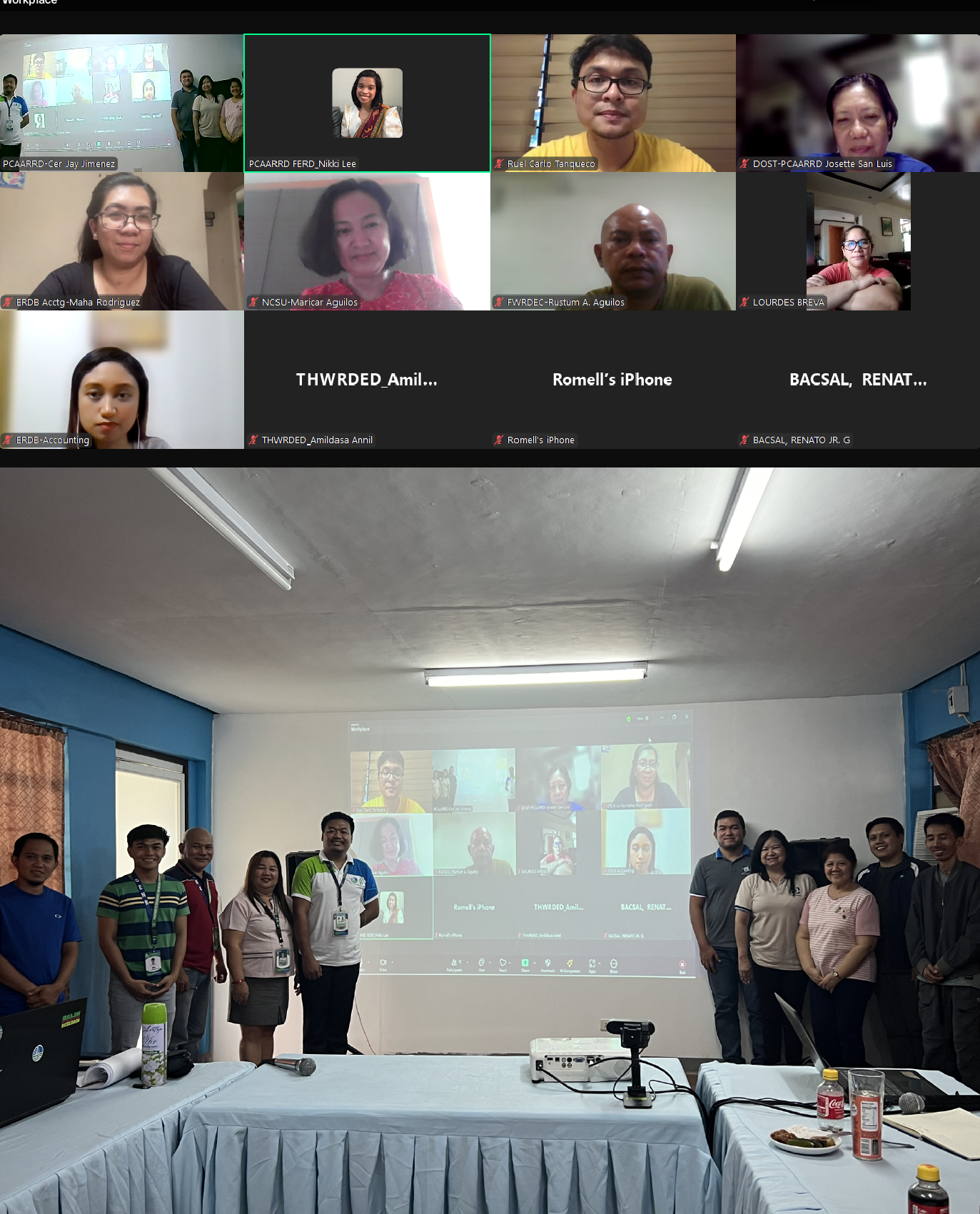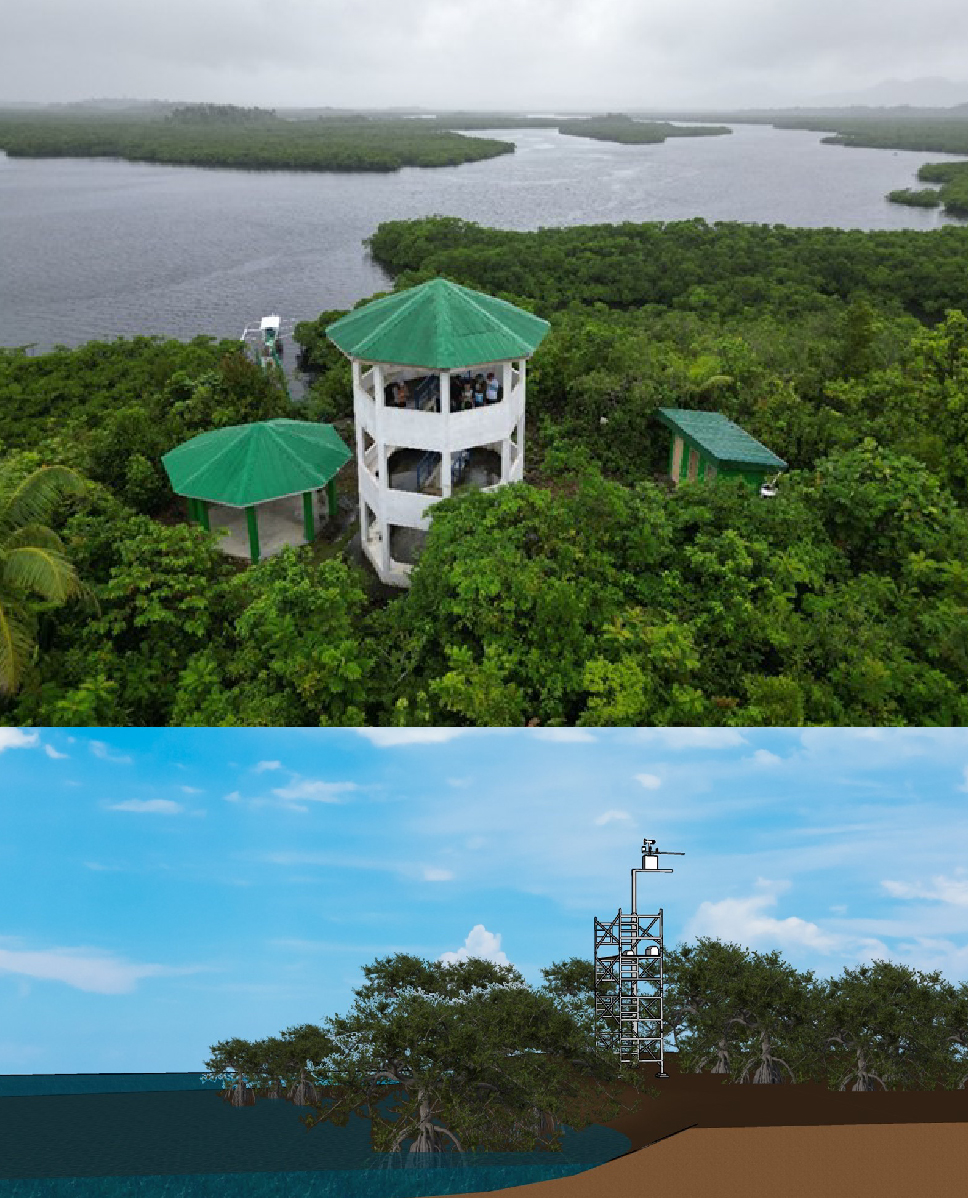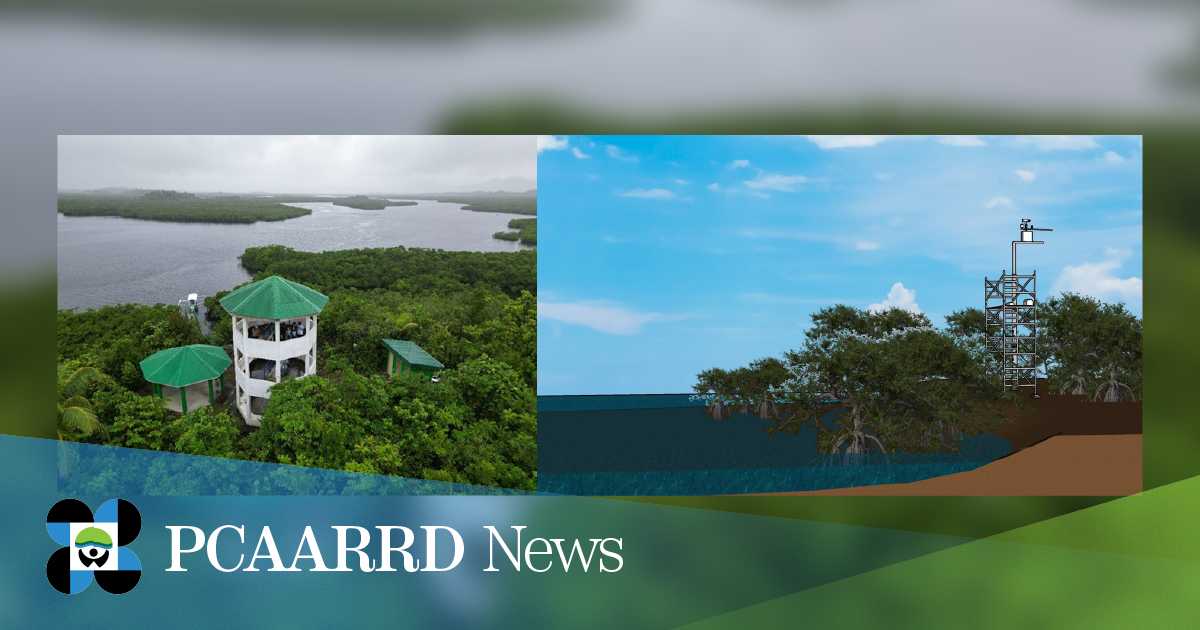
On-site participants from DOST-PCAARRD, ERDB-FWRDEC, DENR regional offices, and Tinuy-an Falls Protected Landscape (TFPL) and online attendees from ERDB main office, CarSu, NCSU, and SIPLAS during the Phil-flux project inception meeting. (Image credit: FERD)
A pioneer project using eddy covariance system, a state-of-the-art technology that quantifies long-term and real-time forest ecosystem-level carbon fluxes (sequestration and emission), commenced through an inception meeting last September 3, 2024 in Bislig, Surigao del Sur.
The “Real-time Carbon Flux Monitoring in Mangrove, Plantation, and Natural Forests in Mindanao, Philippines: Using Eddy Covariance Approach” or Phil-flux project is being implemented by the Ecosystems Research and Development Bureau - Forest and Wetland Research, Development and Extension Center (ERDB-FWRDEC) with funding support from the Philippine Council for Agriculture, Aquatic and Natural Resources Research and Development of the Department of Science and Technology (DOST-PCAARRD).
Phil-flux aims to quantify the carbon sequestration and emission potentials of selected mangrove forest, plantation forest, and natural forest in Mindanao. This can serve as reference points in any carbon-related inventories and monitoring initiatives. In addition, carbon flux prediction models will also be developed, which can be applied in other forests with similar eco-physiological and climatic conditions.
The project will be implemented for three years in three project sites: Mangrove Forest in Del Carmen, Siargao Island (4,295 hectares [ha]), Falcata Plantation in Sibagat, Agusan del Sur (9,492 ha), and Tinuy-an Falls Protected Landscape in Surigao del Sur/Agusan del Sur (4,321 ha).

Proposed location site of the eddy covariance tower in Surigao Island Protected Landscape and Seascapes (SIPLAS), Del Carmen, Siargao Island (left) and perspective plan of the tower (right). (Image credit: ERDB-FWRDEC)
The inception meeting was conducted through a hybrid format with participants from the project implementation team and collaborators: ERDB-FWRDEC, ERDB main office, Caraga State University (CarSu), North Carolina State University (NCSU), Department of Environment and Natural Resources (DENR) regional offices, and Protected Area Management Offices (PAMO).
DOST-PCAARRD’s Forestry and Environment Research Division (FERD) spearheaded the meeting with support from the Institution Development Division (IDD), Office of the Deputy Executive Director for Research and Development (OED-RD), and PCAARRD Accounting Section.
To ensure the success of the project, Dr. Nimfa Torreta, FERD Director, discussed project management and field implementation concerns during the inception meeting. Mr. John Benrich Zuñiga, S&T Program Manager for Climate Change, facilitated the in-depth discussion on the Grants-In-Aid (GIA) guidelines and project management and technical matters. Lastly, Dr. Dalisay Cabral, FERD Assistant Director, delivered the closing remarks by commending the project team and collaborators for their commitment and valuable contribution to the project.
The Phil-flux project is expected to provide basis and recommendations on the climate change mitigation potentials of Philippine forests and spur the development of adaptation and mitigation plans, rehabilitation and conservation programs, and relevant policy and legislative measures. This is a crucial contribution to help the Philippines achieve its targets on the Nationally Determined Contribution (NDC) and Sustainable Development Goal (SDG) 13 on climate action.

